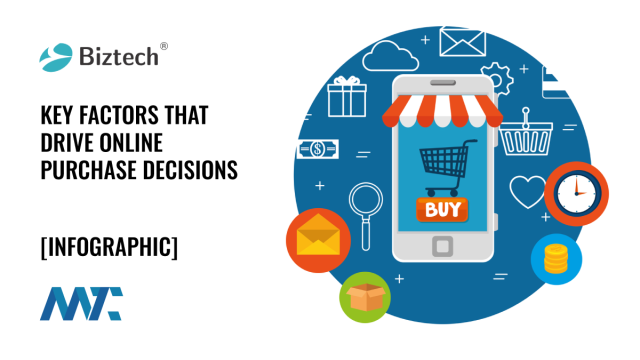When shopping online, consumers have more power and options than ever. From comparing prices across multiple stores in seconds to reading dozens of reviews at the click of a button, e-commerce has revolutionized how we buy. Yet, behind all the convenience and choice lies one vital question:
What truly motivates a shopper to hit that buy button online?
In this article, we’ll explore the top factors influencing purchase decisions in the digital realm and offer practical insights for e-commerce businesses aiming to convert browsers into loyal customers.
Table of Contents
Trust and CredibilityWebsite User ExperiencePricing, Discounts, and ShippingSocial Proof and RecommendationsPersonalization and CustomizationCustomer Service and Easy ReturnsTakeaways for E-Commerce Companies
Trust and Credibility
In a world where consumers can’t physically touch or see products before purchasing, trust and credibility are the bedrock of online retail success. If a customer doesn’t trust the store, no amount of flashy discounts or website features will sway them. Key considerations:
Website Security: A secure website (with HTTPS and visible security badges) helps reassure buyers that their payment details and personal information will remain safe.
Transparent Policies: Clear return policies, contact information, and privacy statements reduce uncertainty and foster confidence.
Professional Design: A clean, well-organized site signals reliability. Shoppers are more likely to trust a brand that appears polished.
Establishing trust isn’t just a nice extra—it’s an essential foundation for everything else you do. When shoppers feel safe and confident, they’re far more likely to complete a purchase and return in the future.
Website User Experience
A seamless user experience (UX) is more than a matter of aesthetics; it directly impacts whether visitors stay to explore or leave in frustration. From navigation to page speed, every touchpoint shapes a consumer’s perception.
Ease of Navigation: Make sure products are easy to find through logical categories, intuitive menus, and robust search functions.
Fast Load Times: Slow-loading pages can lead to high bounce rates. Modern consumers expect near-instant results.
Mobile Optimization: Over half of all online sales now happen on smartphones. A mobile-responsive site is no longer optional—it’s mandatory.
A positive user experience can transform casual browsers into loyal customers. By minimizing friction and simplifying the buying journey, you can encourage more sales and repeat visits.
Pricing, Discounts, and Shipping
Price sensitivity is alive and well in online shopping. Shoppers can compare products instantly, so competitive pricing, transparent shipping costs, and tempting discounts have become critical.
Transparent Pricing: Hidden fees or complicated costs at checkout can drive customers away. Be upfront to build trust.
Discounts and Promotions: Seasonal sales, coupon codes, and loyalty rewards often tip the scale in favor of a purchase.
Reasonable Shipping Costs: High shipping fees are a top cause of cart abandonment. Offer free shipping thresholds or low, flat rates when possible.
Balancing affordability and profitability can be challenging, but clarity and perceived value often differentiate between a completed sale and an abandoned cart.
Social Proof and Recommendations
When buyers can’t handle products in person, they rely heavily on the experiences and opinions of others. Social proof—like reviews, ratings, and user-generated content—offers reassurance.
Customer Reviews: Honest, detailed feedback builds trust and addresses potential questions or concerns.
Influencer Endorsements: Partnering with relevant influencers can sway consumers, especially younger audiences, who seek guidance from social media personalities.
Community Engagement: Fostering an online community where customers share tips, photos, and experiences can encourage deeper brand loyalty.
Positive endorsements from fellow shoppers can be the final push someone needs to buy. Highlighting authentic feedback shows transparency and inspires confidence.
Personalization and Customization
Modern consumers crave experiences that feel tailored just for them. Personalization—from product recommendations to targeted emails—can dramatically improve engagement and sales.
Relevant Product Suggestions: Showcasing items based on browsing history or past purchases makes shoppers feel understood.
Customized Offers: Personalized discounts or loyalty perks deepen the connection and encourage future visits.
Segmented Marketing: Dividing your audience into segments (e.g., by location, purchase history) allows you to deliver more relevant messages.
Tailoring your approach drives immediate conversions and fosters a sense of connection. Consumers who feel seen are more inclined to come back.
Customer Service and Easy Returns
Online shoppers can’t get immediate in-person help, so quick, accessible, and empathetic customer service is essential. Likewise, a simple returns process eases concerns about purchasing items sight unseen.
Multiple Support Channels: Offer chat, email, or phone assistance so customers can reach you through their preferred method.
Fast Response Times: Prompt resolutions can turn frustrated users into loyal customers.
Hassle-Free Returns: Generous return policies and free return shipping (when feasible) significantly reduce cart abandonment rates.
Customer service is your brand’s human touch in a digital space. Providing timely help and a painless returns process wins loyalty in a marketplace full of alternatives.
Takeaways for E-Commerce Companies
To maximize conversion rates and foster long-term customer relationships, keep the following in mind:
Invest in Trust-Building: Show security badges, maintain a professional site design, and communicate policies clearly.
Focus on User Experience: Optimize site speed, mobile responsiveness, and navigation. Make the path to purchase straightforward and frustration-free.
Offer Transparent Pricing: Minimize hidden costs, be clear about shipping fees, and consider free shipping thresholds or special discounts.
Leverage Social Proof: Encourage and showcase reviews, ratings, and user-generated content to reassure potential buyers.
Personalize Where Possible: Suggest relevant products, tailor marketing messages, and reward loyal customers with exclusive offers.
Provide Excellent Support: Ensure fast customer service responses, offer multiple contact channels, and make returns simple.
By prioritizing trust, convenience, and personalization, you’ll create an environment where shoppers feel comfortable and excited to buy—leading to higher conversion rates and a strong foundation for lasting brand loyalty.
©2025 DK New Media, LLC, All rights reserved | Disclosure
Originally Published on Martech Zone: The Digital Decider: Key Factors That Drive Online Purchase Decisions

